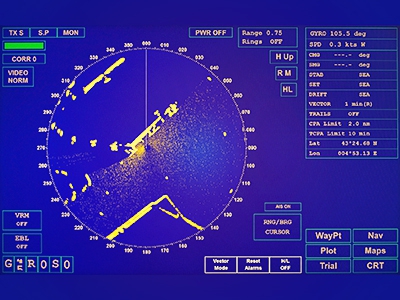Japan P&I Club LP Bulletin
The Japan P&I Club has recently issued a loss prevention bulletin to advice on how to avoid collisions with analysis on the use of ARPA and AIS, the information they give the navigator and what it means and with some reminders of the International Regulations for Preventing Collisions at Sea 1972 (COLREGs) and guidelines which should be followed.
The introduction of ARPA provided a significant advance in collision avoidance because any risk of collision with any of the other ships in the area is constantly assessed by computer technology and the results are displayed for the navigator to use. That is, of course, provided they are plotted or automatically detected. This technology has brought into focus the fact that it is necessary to determine the distance off at the closest point of approach (CPA) of another ship in order to establish whether or not there is a risk of collision with that other ship. The Japan P&I Club highlights that the belief that an ARPA can tell the navigator that no risk of collision exists is entirely false.
Guidelines for successful watchkeeping with ARPA
- Appreciate that the ARPA display cannot tell you that there is no risk of collision
- Understand that the information provided by the ARPA does not allow you to reduce the minimum allowed CPA distance to less than is considered safe by the master, and as instructed in his night orders and standing orders.
- Recognise that the information provided by the ARPA does not permit you to delay taking collision avoidance action.
- Do not rely only upon the information given by the ARPA display and, when appropriate, use a series of individual bearings to assess whether or not there is a risk of collision with another ship.
Guidelines for successful watchkeeping with AIS
- AIS should not be considered as a device to encourage communication between ships navigators.
- AIS information has the same status as ARPA information, and it should be treated as an information display system.
| Some simple good seamanship practice: |
|
Further advice and tips for collision avoidance and effective bridge watchkeeping may be found by reading the relevant Loss Prevention Bulletin
Source: The Japan P&I Club































































